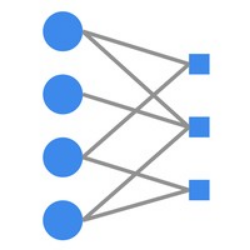We present a means of formulating and solving the well known structure-and-motion problem in computer vision with probabilistic graphical models. We model the unknown camera poses and 3D feature coordinates as well as the observed 2D projections as Gaussian random variables, using sigma point parameterizations to effectively linearize the nonlinear relationships between these variables. Those variables involved in every projection are grouped into a cluster, and we connect the clusters in a cluster graph. Loopy belief propagation is performed over this graph, in an iterative re-initialization and estimation procedure, and we find that our approach shows promise in both simulation and on real-world data. The PGM is easily extendable to include additional parameters or constraints.
翻译:我们用概率图形模型来描述和解决计算机视觉中众所周知的结构和动作问题。我们用高西亚随机变量来模拟未知的相机配置和3D特征坐标,以及观察到的2D预测。我们用西格玛点参数来模拟这些变量之间的非线性关系。每个预测所涉及的变量被分组成一个集群,我们用一个集群图将各组连接起来。在这个图上,通过一个迭接的重新启用和估算程序,进行循环的信仰传播,我们发现我们的方法在模拟和真实世界数据上都显示了希望。PGM很容易扩展,以包括额外的参数或限制。




